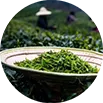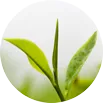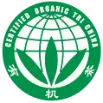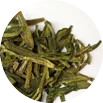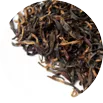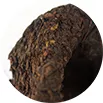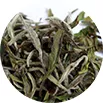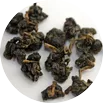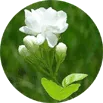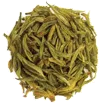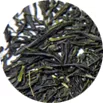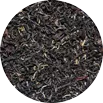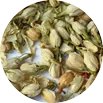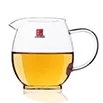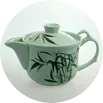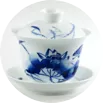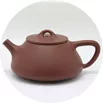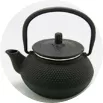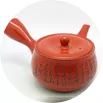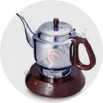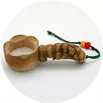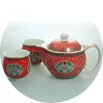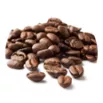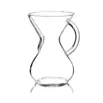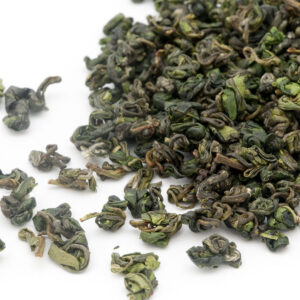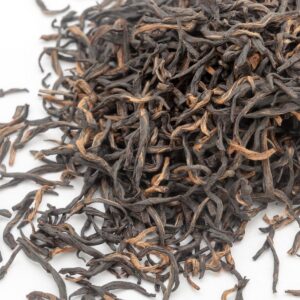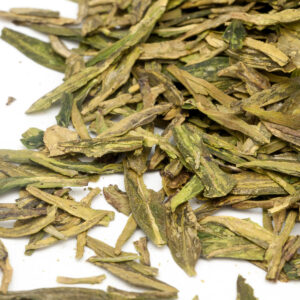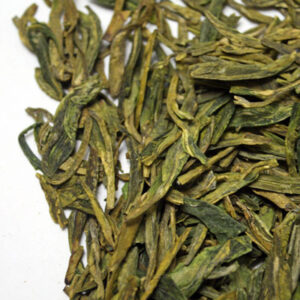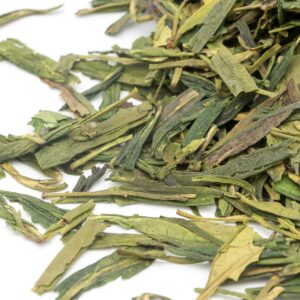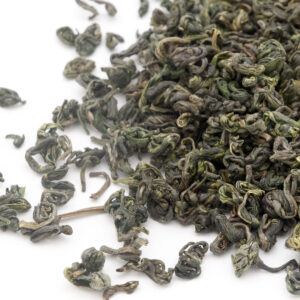Bi Tan Piao Xue
"Snow falling on a jade green pond" - a beautifully poetic name for a fine green tea from the spring harvest in the Ze Rong region of Fujian. The tea was scented with the finest autumn jasmine in a high ratio of 5:1 (5kg of jasmine flowers were used for 1kg of tea).
Jasmine flowers are also abundantly present in the tea itself (although they do not add any more aroma - they are aesthetically pleasing and give meaning to the poetic name of the tea).
The tea has a distinctly jasmine-sweet, silky-fruity flavour with a rich aroma that lasts for many infusions.
Bai Mu Dan King
"Royal White Peony" - a great class of white tea.
The colour of the infusion is yellowish-amber, the aroma is floral and delicate, reminiscent of the scent of peony. The taste is smooth as silk and at the same time full and round. Aftertaste is very long, pleasantly sweet.
This year, thanks to a slightly different processing, which is growing in popularity, we can find a note known from aged white teas in the taste.
An Cha 2019 Mao Jian
A black (dark) Chinese tea from Anhui Province, similar to the traditional Lu An Hei Cha, but produced outside the originally defined area.
The tea comes in a box with a wide bamboo leaf (Ruo Ye) used in traditional Chinese medicine. It is recommended to prepare the tea together with small parts of the bamboo leaf.
The sparkling, orange-yellow infusion has an intense fruity aroma with a subtle herbal note. The taste is refreshing, full, richly fruity with a gradually sweetening aftertaste.
Lü Bao Shi
Meng Ding Jin Ya
"Golden shoots", luxury red tea of our production from the best gardens in Meng Ding Shan in Sichuan.
The delicate, tiny, slightly spirally twisted leaf with the majority of golden tips gives off a pleasant, slightly floral-fruity scent in the dry state, which develops in full fruity tones after watering. The color of the infusion is rather orange with a hint of red. The taste is full, round and sweetly fruity with a long aftertaste. Exclusive red tea not only for connoisseurs!
Chen Pi Shou Mei Fang Cha
Shou Mee, also known in the Czech Republic under the translation 'Eyebrows of a long age' - the basic class of white tea.
Large yellow-green to light brown richly downy leaves, there are also a few thick leaves. Infusion of deep orange-yellow color with a typical aroma and taste of white teas - slightly herbal spicy to fruity with a strong aftertaste.
Added to this is the citrusy-fresh character of tangerine.
Shou Mei 2024 Xiao Bing Cha 100g
Shou Mee, also known in the Czech Republic under the translation 'Eyebrows of a long age' - the basic class of white tea. Large yellow-green to light brown richly downy leaves, there are also a few thick leaves. Infusion of deep orange-yellow color with a typical aroma and taste of white teas - slightly herbal spicy to fruity with a strong aftertaste.
Long Jing Shi Feng
"Lion's Top Dragon Well" - According to traditional Chinese view, the true Long Jing is supposed to have four characteristics (or four treasures) - a bright green color, a dense aroma, a saturated taste and a beautiful shape.
Our Shi Feng has all these qualities in abundance. To better enjoy not only the taste, but also the look of this famous tea, we recommend using a glass teapot or tall glass to prepare it. The tea is watered with water around 80-85 ° C. Tea should be handled with care, it is better to prepare it softer to maintain its delicate rich aroma.
Long Jing Xi Hu Superior
The upper class of the well-known & popular "Dragon Wells of the West Lake" (which has a total of 13 different quality classes). Authentic Lung Ching is supposed to be processed only by hand, which requires a lot of skill and time, and thus increases the price of tea.
However, the quality of such tea corresponds to the price. Dragon wells of higher varieties give a crystal clear drink of a tender emerald color with an aroma as dense as orchids and a fresh saturated taste with fruit tones.
Long Jing Xi Hu
"Dragon Well from West Lake". Lake 'Xi Hu' is located near Hangzhou in eastern China. The monastery plantations around it were known from the time of the Classical Book of Tea by Lu Yüe (758 AD).
Lung Ching belongs to spring teas and the best collection comes from the same period. The process of sorting, drying and roasting should be followed exactly for the production of real Lung Ching. The tea has flat leaves, a strong aroma and is sweet and beautifully fragrant in the infusion.
Dian Hong Jin Zhen
"Golden Needles" - an excellent variety of red tea from the Feng Qing area of Yunnan Province. The content of "Da Jin Hao" or "big golden tips" is about 60-70%.
Richly hairy tips are evenly rolled. The color of the infusion is dark orange-red and remarkably clear. The aroma is more balanced and intense than in the Dian Hong Gong Fu class and you can smell the aroma of dried apricots, forest honey and peaches.
The taste is very penetrating & delicate. The tea lasts many infusions, aftertaste persists in the mouth for a long time after drinking. Very good as a warming tea, which makes it especially suitable for drinking in the cold months of the year. For casual tea lovers, it does have euphoric effects.
Song Luo Ji Pin
A selection class of tea from Song Luo mountain, which is honored with the title "Green Gold" among the famous teas of China.
The crystal-clear infusion is strong, slightly grassy and has a sweet taste of Chinese olives. Tea processed only from tips is strong, dense and contains a considerable amount of fine fluff. Not only does this tea have an excellent color, aroma and taste, but it also contains many substances that a person needs. According to research, it has a high content of vitamin C (up to 170 mg / 100 g), it also contains up to 17 types of amino acids, organic compounds and minerals that have both nutritional and healing effects.
Song Luo is recommended primarily to support digestion, also helps remove fats from the body, relieves heat and can regulate the flow of life energy. It has often been prescribed for the treatment of high blood pressure, kidney disease, cardiovascular disease, dysentery but also for the treatment of skin ulcers.


